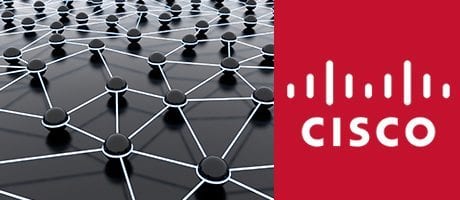This new CISCO course is all you need to prepare & pass Cisco's new CCNA R/S 200-301 certification exam that became effective on February 2020.
Intermediate / Advanced
6 Days / 12 Evenings
Certification Awarded
Study materials included
Learning options for this course

Classroom
This course can be taken at our Training Centre in Dublin 2. Socially distanced learning. Full interaction with expert trainers.

Virtual Classroom
Daytime or evenings using iLiveLearning. Full interaction with the trainer, just like in the classroom. Software provided.
What You will know at the end of the Course
Network theory and fundamentals
LAN Switching Technologies
Routing Technologies
WAN Technologies
Infrastructure Services
Infrastructure Security
LAN Switching Technologies
WAN Technologies
Infrastructure Maintenance Technologies
Course overview
Suitable for users interested in becoming Cisco Certified Network Associate certified. You will learn how to build, optimize, and troubleshoot networks. If you are currently working in a network infrastructure role this course will benefit you.
This course starts by reviewing the design concepts for building networks. You will gain a fast, practical and extensive knowledge of the powerful features of Cisco IOS, learning how to configure, troubleshoot and optimize networks.
Requirements
CompTIA A+
CompTIA Network+
Certification
At the end of the course, you’ll be Certified by the Irish Academy of Computer Training
Who would benefit
If you are currently working, or would like to work with computer networks.
Why take the Course
To understand how to configure and troubleshoot Cisco network equipment, and gain CCNA certification.
Course curriculum
Section 1: Network Fundamentals
- Compare and contrast OSI and TCP/IP models
- Compare and contrast TCP and UDP protocols
- Describe the impact of infrastructure components in an enterprise network
- Firewalls
- Access points
- Wireless controllers
- Describe the effects of cloud resources on enterprise network architecture
- Traffic path to internal and external cloud services
- Virtual services
- Basic virtual network infrastructure
- Compare and contrast collapsed core and three-tier architectures
- Compare and contrast network topologies
- Star
- Mesh
- Hybrid
- Select the appropriate cabling type based on implementation requirements
- Apply troubleshooting methodologies to resolve problems
- Perform and document fault isolation
- Resolve or escalate
- Verify and monitor resolution
- Configure, verify, and troubleshoot IPv4 addressing and subnetting
- Compare and contrast IPv4 address types
- Unicast
- Broadcast
- Multicast
- Describe the need for private IPv4 addressing
- Identify the appropriate IPv6 addressing scheme to satisfy addressing requirements in a LAN/WAN environment
- Configure, verify, and troubleshoot IPv6 addressing
- Configure and verify IPv6 Stateless Address Auto Configuration
- Compare and contrast IPv6 address types
- Global unicast
- Unique local
- Link local
- Multicast
- Modified EUI 64
- Autoconfiguration
- Anycast
Section 2: LAN Switching Technologies
- Describe and verify switching concepts
- MAC learning and aging
- Frame switching
- Frame flooding
- MAC address table
- Interpret Ethernet frame format
- Troubleshoot interface and cable issues (collisions, errors, duplex, speed)
- Configure, verify, and troubleshoot VLANs (normal/extended range) spanning multiple switches
- Access ports (data and voice)
- Default VLAN
- Configure, verify, and troubleshoot interswitch connectivity
- Trunk ports
- Add and remove VLANs on a trunk
- DTP, VTP (v1&v2), and 802.1Q
- Native VLAN
- Configure, verify, and troubleshoot STP protocols
- STP mode (PVST+ and RPVST+)
- STP root bridge selection
- Configure, verify and troubleshoot STP related optional features
- PortFast
- BPDU guard
- Configure and verify Layer 2 protocols
- Cisco Discovery Protocol
- LLDP
- Configure, verify, and troubleshoot (Layer 2/Layer 3) EtherChannel
- Static
- PAGP
- LACP
- Describe the benefits of switch stacking and chassis aggregation
Section 3: Routing Technologies
- Describe the routing concepts
- Packet handling along the path through a network
- Forwarding decision based on route lookup
- Frame rewrite
- Interpret the components of a routing table
- Prefix
- Network mask
- Next hop
- Routing protocol code
- Administrative distance
- Metric
- Gateway of last resort
- Describe how a routing table is populated by different routing information sources
- Admin distance
- Configure, verify, and troubleshoot inter-VLAN routing
- Router on a stick
- SVI
- Compare and contrast static routing and dynamic routing
- Compare and contrast distance vector and link state routing protocols
- Compare and contrast interior and exterior routing protocols
- Configure, verify, and troubleshoot IPv4 and IPv6 static routing
- Default route
- Network route
- Host route
- Floating static
- Configure, verify, and troubleshoot single area and multi-area OSPFv2 for IPv4 (excluding authentication, filtering, manual summarization, redistribution, stub, virtual-link, and LSAs)
- Configure, verify, and troubleshoot single area and multi-area OSPFv3 for IPv6 (excluding authentication, filtering, manual summarization, redistribution, stub, virtual-link, and LSAs)
- Configure, verify, and troubleshoot EIGRP for IPv4 (excluding authentication, filtering, manual summarization, redistribution, stub)
- Configure, verify, and troubleshoot EIGRP for IPv6 (excluding authentication, filtering, manual summarization, redistribution, stub)
- Configure, verify, and troubleshoot RIPv2 for IPv4 (excluding authentication, filtering, manual summarization, redistribution)
- Troubleshoot basic Layer 3 end-to-end connectivity issues
Section 4: WAN Technologies
- Configure and verify PPP and MLPPP on WAN interfaces using local authentication
- Configure, verify, and troubleshoot PPPoE client-side interfaces using local authentication
- Configure, verify, and troubleshoot GRE tunnel connectivity
- Describe WAN topology options
- Point-to-point
- Hub and spoke
- Full mesh
- Single vs dual-homed
- Describe WAN access connectivity options
- MPLS
- Metro Ethernet
- Broadband PPPoE
- Internet VPN (DMVPN, site-to-site VPN, client VPN)
- Configure and verify single-homed branch connectivity using eBGP IPv4 (limited to peering and route advertisement using Network command only)
- Describe basic QoS concepts
- Marking
- Device trust
- Prioritization
- Voice
- Video
- Data
- Shaping
- Policing
- Congestion management
Section 5: Infrastructure Services
- Describe DNS lookup operation
- Troubleshoot client connectivity issues involving DNS
- Configure and verify DHCP on a router (excluding static reservations)
- Server
- Relay
- Client
- TFTP, DNS, and gateway options
- Troubleshoot client- and router-based DHCP connectivity issues
- Configure, verify, and troubleshoot basic HSRP
- Priority
- Preemption
- Version
- Configure, verify, and troubleshoot inside source NAT
- Static
- Pool
- PAT
- Configure and verify NTP operating in a client/server mode
Section 6: Infrastructure Security
- Configure, verify, and troubleshoot port security
- Static
- Dynamic
- Sticky
- Max MAC addresses
- Violation actions
- Err-disable recovery
- Describe common access layer threat mitigation techniques
- 1x
- DHCP snooping
- Nondefault native VLAN
- Configure, verify, and troubleshoot IPv4 and IPv6 access list for traffic filtering
- Verify ACLs using the APIC-EM Path Trace ACL analysis tool
- Configure, verify, and troubleshoot basic device hardening
- Local authentication
- Secure password
- Access to device
- Source address
- Telnet/SSH
- Login banner
- Describe device security using AAA with TACACS+ and RADIUS
Section 7: Infrastructure Configuration
- Configure and verify device-monitoring protocols
- SNMPv2
- SNMPv3
- Syslog
- Troubleshoot network connectivity issues using ICMP echo-based IP SLA
- Configure and verify device management
- Backup and restore device configuration
- Cisco Discovery Protocol or LLDP for device discovery
- Licensing
- Logging
- Timezone
- Loopback
- Configure and verify initial device configuration
- Perform device maintenance
- IOS upgrades and recovery (SCP, FTP, TFTP, and MD5 verify)
- Password recovery and configuration register
- ile system management
- Use Cisco IOS tools to troubleshoot and resolve problems
- Ping and traceroute with extended option
- Terminal monitor
- Log events
- Local SPAN
- Describe network programmability in enterprise network architecture
- Function of a controller
- Separation of control plane and data plane
- Northbound and southbound APIs
Section 8: LAN Switching Technologies
- Configure, verify, and troubleshoot VLANs (normal/extended range) spanning multiple switches
- Access ports (data and voice)
- Default VLAN
- Configure, verify, and troubleshoot interswitch connectivity
- Add and remove VLANs on a trunk
- DTP and VTP (v1&v2)
- Configure, verify, and troubleshoot STP protocols
- STP mode (PVST+ and RPVST+)
- STP root bridge selection
- Configure, verify, and troubleshoot STP-related optional features
- PortFast
- BPDU guard
- Configure, verify, and troubleshoot (Layer 2/Layer 3) EtherChannel
- Static
- PAGP
- LACP
- Describe the benefits of switch stacking and chassis aggregation
- Describe common access layer threat mitigation techniques
- 1x
- DHCP snooping
- Nondefault native VLAN
Section 9: LAN Switching Technologies part b
- Configure, verify, and troubleshoot Inter-VLAN routing
- Router on a stick
- SVI
- Compare and contrast distance vector and link-state routing protocols
- Compare and contrast interior and exterior routing protocols
- Configure, verify, and troubleshoot single area and multiarea OSPFv2 for IPv4 (excluding authentication, filtering, manual summarization, redistribution, stub, virtual-link, and LSAs)
- Configure, verify, and troubleshoot single area and multiarea OSPFv3 for IPv6 (excluding authentication, filtering, manual summarization, redistribution, stub, virtual-link, and LSAs)
- Configure, verify, and troubleshoot EIGRP for IPv4 (excluding authentication, filtering, manual summarization, redistribution, stub)
- Configure, verify, and troubleshoot EIGRP for IPv6 (excluding authentication, filtering, manual summarization, redistribution, stub)
Section 10: WAN Technologies
- Configure and verify PPP and MLPPP on WAN interfaces using local authentication
- Configure, verify, and troubleshoot PPPoE client-side interfaces using local authentication
- Configure, verify, and troubleshoot GRE tunnel connectivity
- Describe WAN topology options
- Point-to-point
- Hub and spoke
- Full mesh
- Single vs dual-homed
- Describe WAN access connectivity options
- MPLS
- MetroEthernet
- Broadband PPPoE
- Internet VPN (DMVPN, site-to-site VPN, client VPN)
Configure and verify single-homed branch connectivity using eBGP IPv4 (limited to peering and route advertisement using Network command only)
Section 11: WAN Technologies
- Configure, verify, and troubleshoot basic HSRP
- Priority
- Preemption
- Version
- Describe the effects of cloud resources on enterprise network architecture
- path to internal and external cloud services
- Virtual services
- Basic virtual network infrastructure
- Describe basic QoS concepts
- Marking
- Device trust
- Prioritization
- Voice
- Video
- Data
- Shaping
- Policing
- Congestion management
- Configure, verify, and troubleshoot IPv4 and IPv6 access list for traffic filtering
- Standard
- Extended
- Named
- Verify ACLs using the APIC-EM Path Trace ACL analysis tool
Section 12: Infrastructure Maintenance Technologies
- Configure and verify device-monitoring protocols
- SNMPv2
- SNMPv3
- Troubleshoot network connectivity issues using ICMP echo-based IP SLA
- Use local SPAN to troubleshoot and resolve problems
- Describe device management using AAA with TACACS+ and RADIUS
- Describe network programmability in enterprise network architecture
- Function of a controller
- Separation of control plane and data plane
- Northbound and southbound APIs
- Troubleshoot basic Layer 3 end-to-end connectivity issues
Contact us.
We'll reply quickly.
Enquiry
I understand that my personal data is being processed in accordance with the privacy notice and accept the terms and conditions of use.

